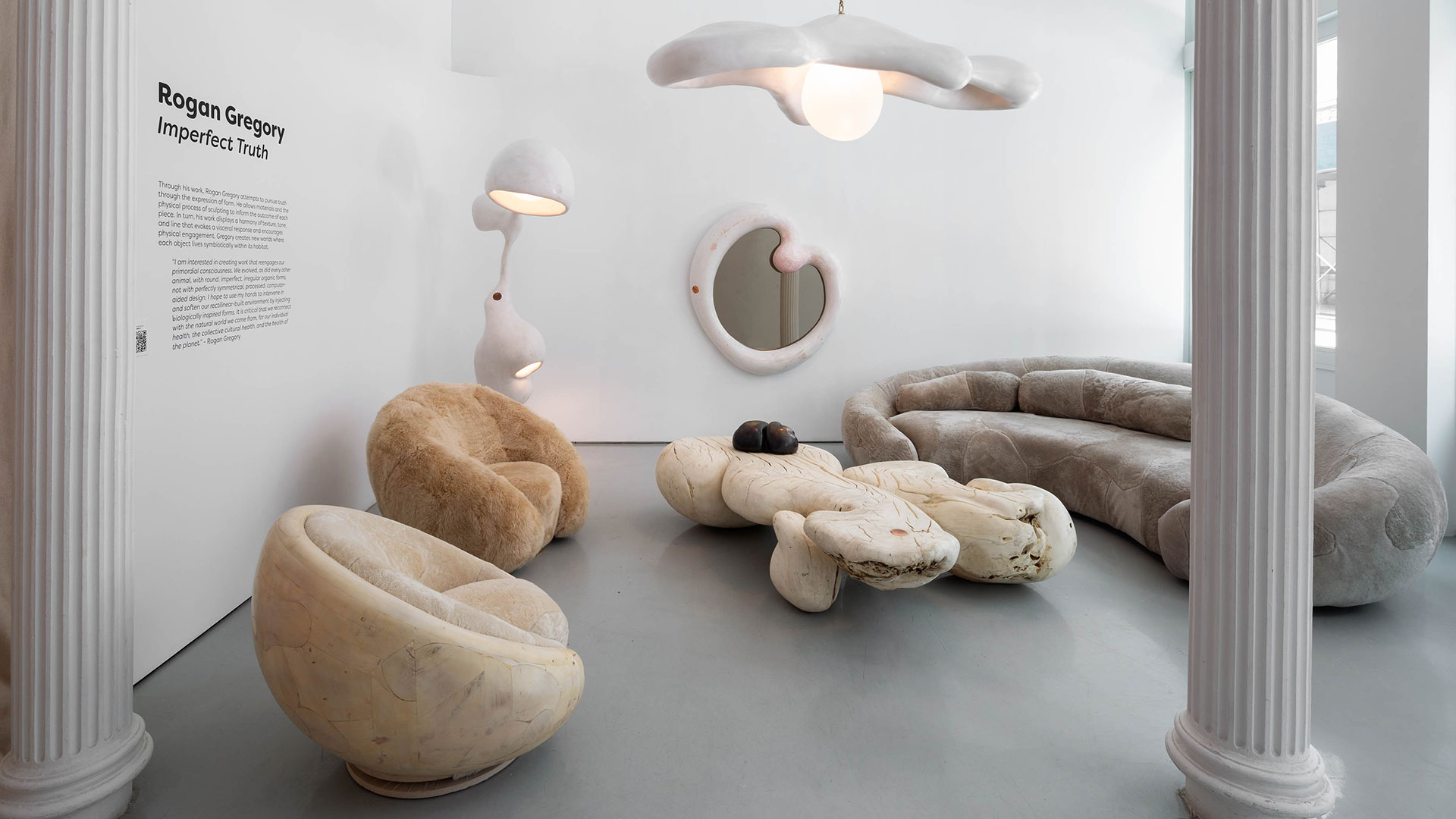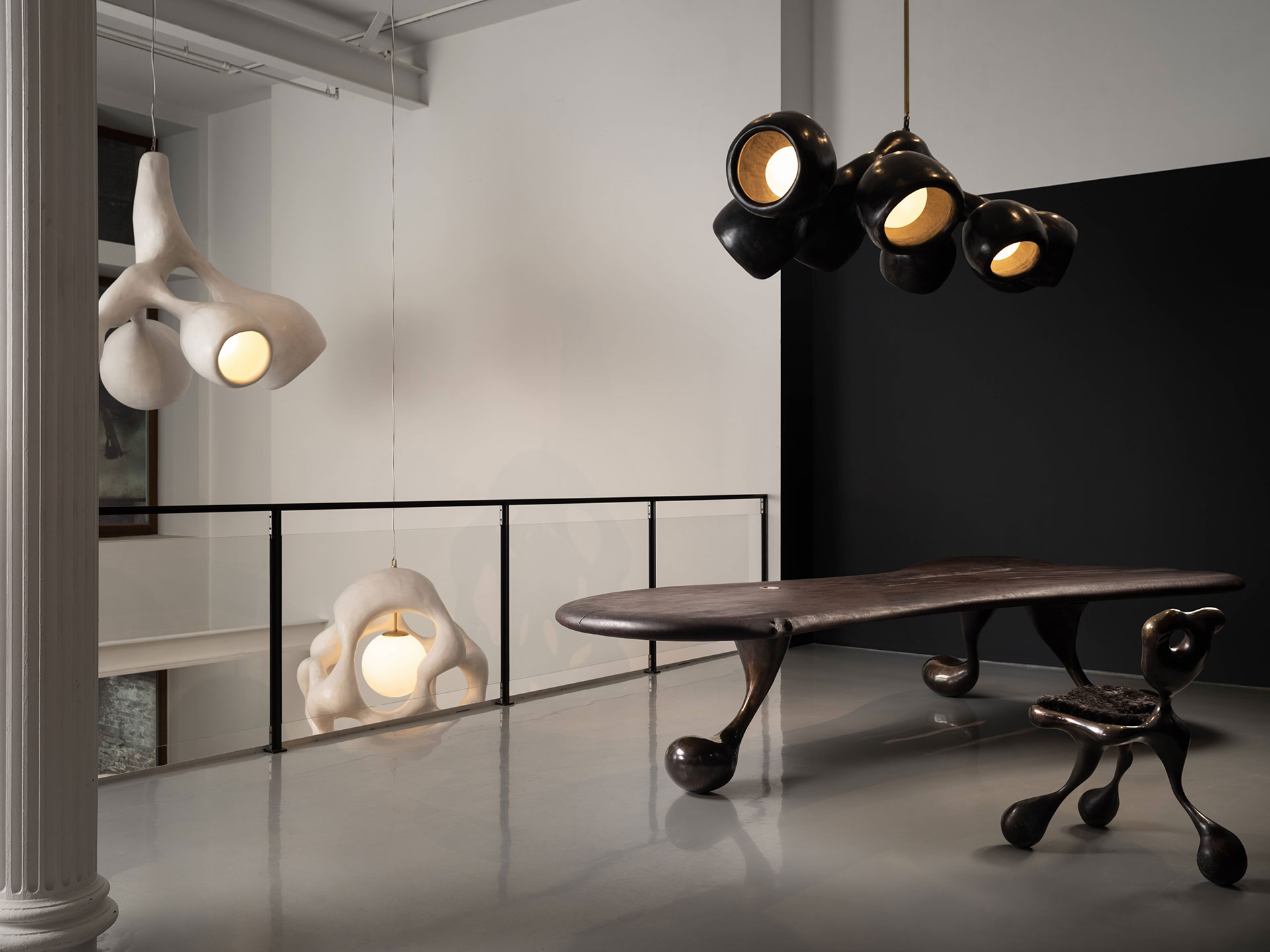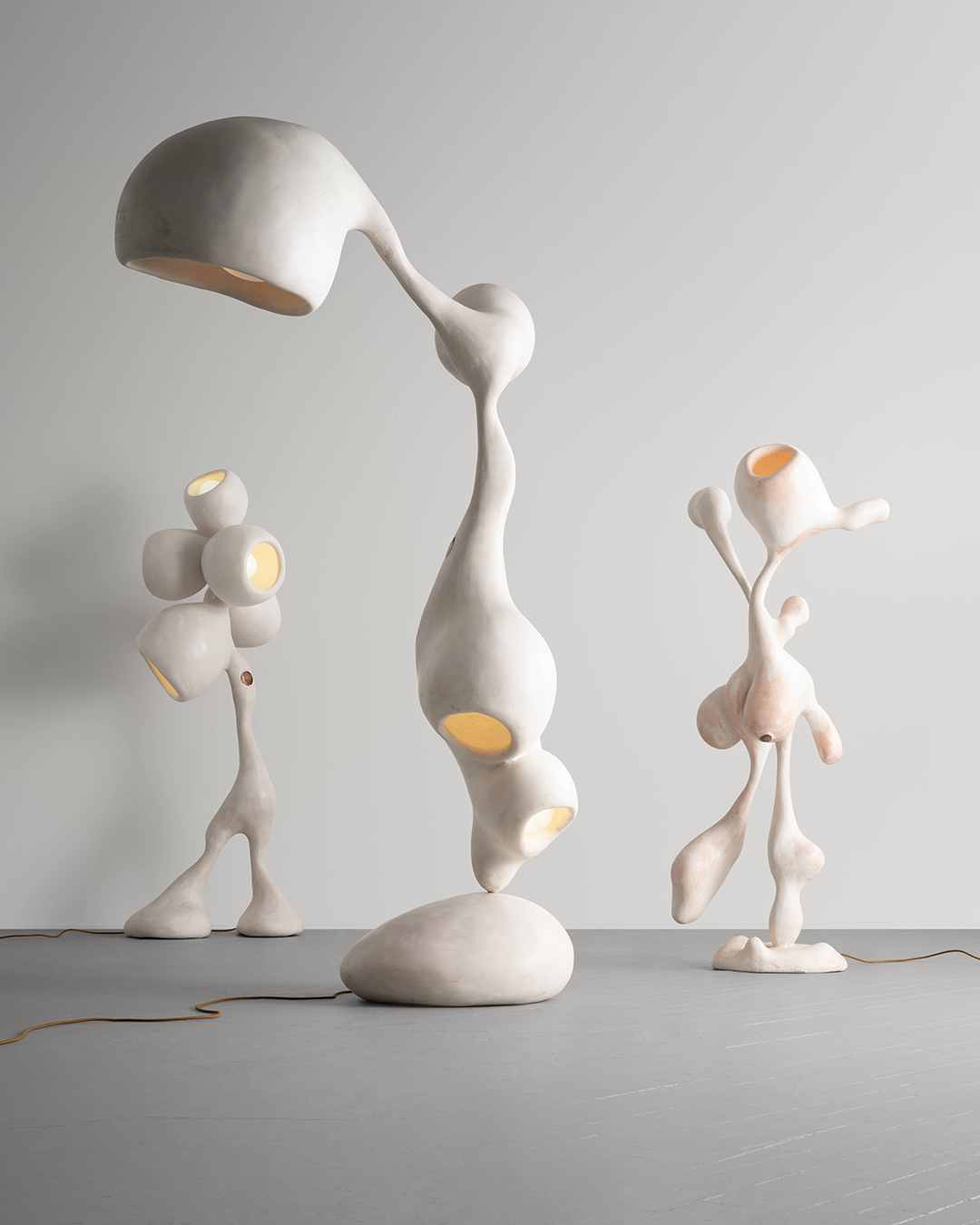Sculptural art and functional design are often deemed two separate entities that rarely ever exist in conjunction. While utilitarian works regularly exhibit a proclivity for the pursuit of distinctive shapes, are the pragmatic and artistic methods genuinely diametrically opposed? California-based fashion designer and sculptor Rogan Gregory sees little difference between creating sculptural and functional furniture design. His unique approach and compositions featuring a prominent juxtaposition of shape, color, light, and texture shine through in his solo exhibition at R & Company, a gallery based in New York.
On view from September 9, 2022, the design exhibition titled 'Rogan Gregory: Imperfect Truth' will run through October 28, 2022. The showcase features homogenous living environments along with Gregory’s intricate chair designs and lamp designs that are evocative of his studio in Santa Monica. “My work is about reintroducing organic forms and stimulating textures and colors into our flat, rectilinear environments,” says Rogan Gregory. “In doing so, I hope to evoke joy, and emotion more broadly, and to encourage new connections to and awareness of nature,” he shares.

Following the show, R & Company will publish the first book about Gregory’s vision and work, with guest essays by family, friends, and peers, in 2023. His individuality is revealed by how he acts, by how he presents himself, by the things that surround him, and his work. “The consistency there lies in the quality of each piece and in their power to elicit a reaction, to impact the viewer or user in profound ways, which I credit to his belief in truth in form,” shares Evan Snyderman, author and founder of R & Company.

The ongoing exhibition extends a warm invitation to visitors to immerse themselves in Gregory’s vision for living. His practice amalgamates visual and material vocabularies that lead to enticing contemporary design. The thoroughly crafted spaces capture his passion for achieving harmony between conflicting textures, organic forms, and meandering lines that inspire connection. The exhibition begins with a living environment, sprawling across the gallery’s ground floor at 64 White Street. Lightness and breathability emanate from the furniture that occupies the area. Designs that include a large, shearling croissant sofa and chairs, an upholstered illuminated sculpture, a solid sandalwood coffee table, and a thick wood-framed mirror, are all donned in shades of white, creams, pinks, and other fleshy tones.
Further into the gallery, the dining space emerges with a darkened visage – an antipodean shift. The walls and floor are painted black, while the furniture and objects, including the dining table, chairs, chandelier and mirrors, feature black and dark tones with bronze accents. “An essential aspect of my work is about bringing nature back into our lives. We have become really separate from the environment and from each other. This has only grown worse as our lives have become increasingly digital in the pandemic, with so many aspects of our daily experiences mediated through flat screens,” explains the furniture designer.

As one navigates through these spaces, a deep focus on juxtaposition, whether between softness and solidity, lightness and darkness, or smooth and textured surfaces, is prominent. This dialogue between material and tone stimulates the eye, induces an emotional response, and invites physical engagement. The walls in the gallery have been curved according to Gregory’s specification, materialising an embracing circle—a form central to life, nature, and Gregory’s vision. Additionally, the interstitial space between the settings houses other experimentations that the designer continues to work on. In this space, suggesting his studio, an array of Gregory’s chairs, lighting designs, and objects sit in a dense cluster. Their collective expression speaks of the designer’s desire to widen the horizons of his ideas and vision.

Gregory’s career began in the fashion industry and soon became a pioneering voice in sustainable fashion. After spending over a decade in the sphere, Gregory decided to give more space to his creative ideas. His lifelong interests in nature, biology, and the human impact on the environment shaped his first sculptures and continue to influence his work today. Exploring different expressions with materials and questions of sustainability, Gregory found his true calling in creating objects that implant the organic world into our otherwise flat and digital lives. "It is critical to our lives, to our health, and to our conversations about sustainability, which we won’t be able to achieve unless we actually feel a relationship to nature," he explains. When looking at his compositions, it is hard to tell whether they are functional objects in pursuit of artistic freedom, sculptures seeking functionality, or both. ‘Imperfect Truth’ reiterates Gregory’s creative crusade that blurs the stern division between the sculptural and the functional, while reintroducing the lost touch between us and our environment.
The exhibition ‘Rogan Gregory: Imperfect Truth’ will be on view from September 9 to October 28, 2022, at R & Company, New York.






 Sign in with email
Sign in with email














What do you think?